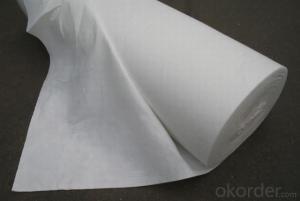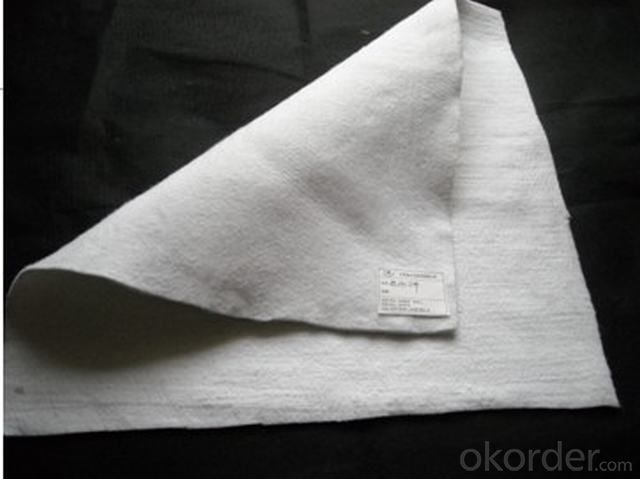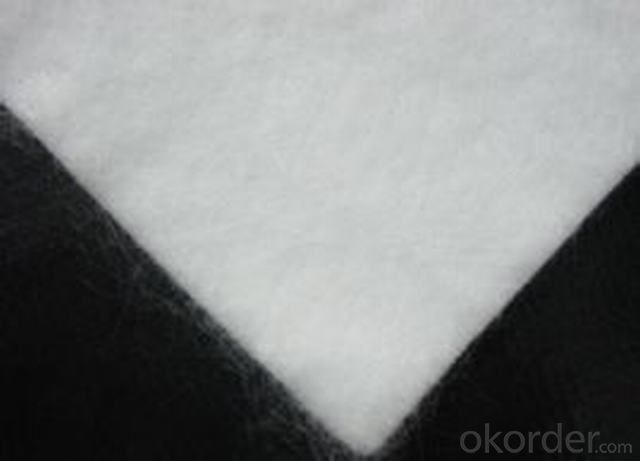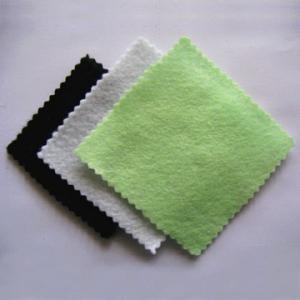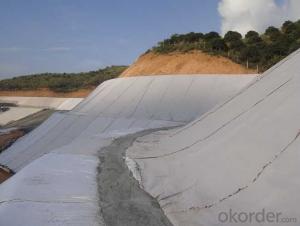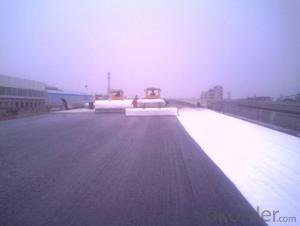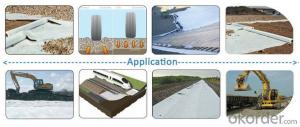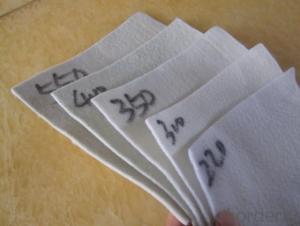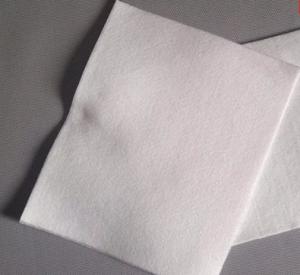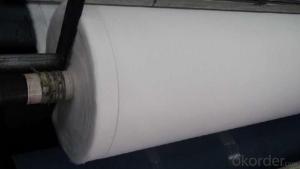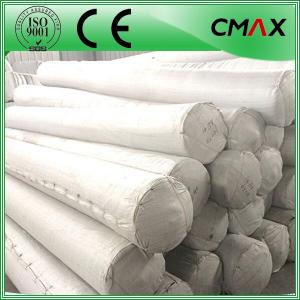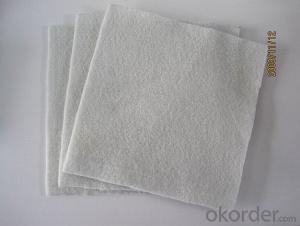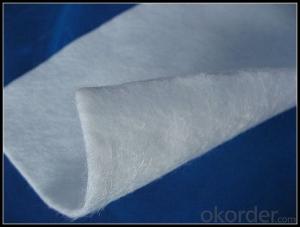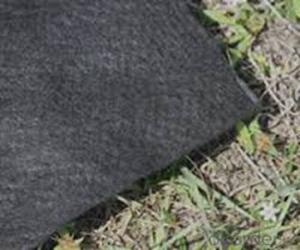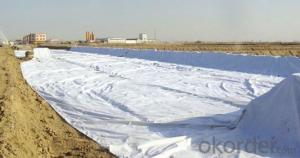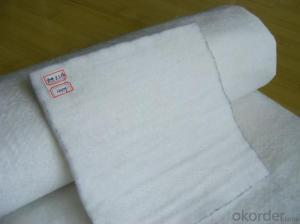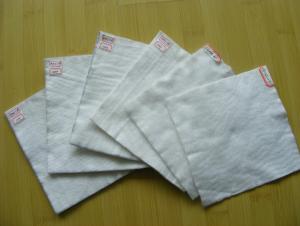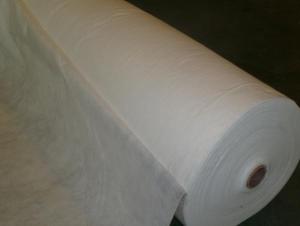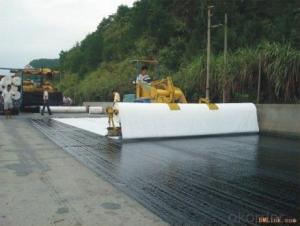4 Geotextile Tape - High Quality Non-Woven Geotextile for Construction
- Loading Port:
- Qingdao
- Payment Terms:
- TT or LC
- Min Order Qty:
- 20000 m²
- Supply Capability:
- 1500000 m²/month
OKorder Service Pledge
OKorder Financial Service
You Might Also Like
Specifications of Non-woven Geotextile for Construction
nonwoven geotextile
material:polyester staple fibre
Polyester geotextiles
PET geotextiles
Functions of Non-woven Geotextile for Construction
1.Separation
The isolation of the railway dregs and the roadbed, roadbed and the soft base, surface of the airdrome and parking lot and the groundsill, different dam materials. It isolates the soil and the gravel of two kinds different.granule pathway from the groundsill or other buildings.
2.Reinforcement
The highway, railway, soil-stone dam, breakwater, airport, backfill soil of retaining wall, slope protection, etc in which distributes the earth stress, prevents the side-displacement of the earth body and improves the earthbody stability.
3.Protection
It prevents the bank from being washed out, protects the bank and the bottom, prevents the water and soil from being washed away
Technical Data Sheet of Short fiber Nonwoven Geotextile for Construction:
Item | Art No. | 1 | 2 | 3 | 4 | 5 | 6 | 7 | 8 | 9 | 10 | 11 |
Unit weight, g/m2 | 100 | 150 | 200 | 250 | 300 | 350 | 400 | 450 | 500 | 600 | 800 | |
Weight tolerance, % | -8 | -8 | -8 | -8 | -7 | -7 | -7 | -7 | -6 | -6 | -6 | |
Thickness, ≥mm | 0.9 | 1.3 | 1.7 | 2.1 | 2.4 | 2.7 | 3.0 | 3.3 | 3.6 | 4.1 | 5.0 | |
Break strength, ≥kN/m | 2.5 | 4.5 | 6.5 | 8.0 | 9.5 | 11.0 | 12.5 | 14.0 | 16.0 | 19.0 | 25.0 | |
CBR burst strength, ≥kN | 0.3 | 0.6 | 0.9 | 1.2 | 1.5 | 1.8 | 2.1 | 2.4 | 2.7 | 3.2 | 4.0 | |
Tear strength, ≥kN | 0.08 | 0.12 | 0.16 | 0.20 | 0.24 | 0.28 | 0.33 | 0.38 | 0.42 | 0.46 | 0.60 | |
Width tolerance, % | -0.5 | |||||||||||
Break elongation, % | 25-100 | |||||||||||
EOS O90, mm | 0.07-0.2 | |||||||||||
Vertical permeability coefficient, cm/s | K×(10-1-10-3)K=1.0-9.9 | |||||||||||

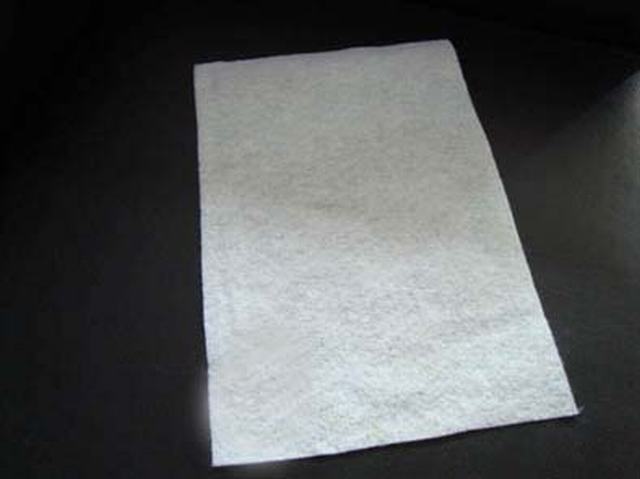
- Q: How do geotextiles contribute to disaster management?
- Geotextiles contribute to disaster management by providing effective erosion control, stabilizing slopes, and preventing soil movement during natural disasters such as floods, landslides, and earthquakes. They also help in the construction of temporary shelters, emergency access roads, and retaining walls, enabling quick response and recovery efforts after a disaster. Additionally, geotextiles can be used for water filtration, drainage, and reinforcement, enhancing the overall resilience and effectiveness of disaster management strategies.
- Q: Are geotextiles permeable to water?
- Yes, geotextiles are permeable to water.
- Q: Can geotextiles be used in green wall systems?
- Yes, geotextiles can be used in green wall systems. Geotextiles are often used as a filtration and separation layer between the soil and the retaining structure in green walls. They help retain moisture, prevent soil erosion, and provide stability to the system.
- Q: Can geotextiles be used in stormwater management applications?
- Yes, geotextiles can be used in stormwater management applications. Geotextiles are commonly employed in stormwater management systems to control erosion, filter pollutants, and promote water infiltration. They provide an effective solution for sediment control, soil stabilization, and reducing the impact of stormwater runoff on the environment.
- Q: How do geotextiles help in preventing soil compaction?
- Geotextiles help in preventing soil compaction by providing a barrier between the soil and external forces, such as heavy machinery or foot traffic. This barrier distributes the load evenly, reducing the pressure on the soil and minimizing compaction. Additionally, geotextiles enhance soil drainage, allowing water to infiltrate and prevent waterlogging, which can also contribute to soil compaction.
- Q: What kind of geotextiles are used to filter the geotextile?
- Short geotextile and filament geotextile
- Q: Geotextile need to adjust the humidity before sampling, what does this mean
- probably. For the first time I heard that geotextiles were sampled to be wet.
- Q: How do geotextiles help in reducing the settlement of structures on soft soils?
- Geotextiles help in reducing the settlement of structures on soft soils by providing a stable and reinforced foundation. They act as a barrier between the soil layers, distributing the load evenly and preventing excessive settlement. Additionally, geotextiles improve the soil's drainage and filtration capabilities, allowing water to permeate and preventing waterlogging, which can further contribute to settlement.
- Q: How do geotextiles help with reinforcement of geogrid reinforced walls?
- Geotextiles help with the reinforcement of geogrid reinforced walls by acting as a separation layer between the soil and the geogrid. They prevent the intermixing of soil particles and the geogrid, maintaining the integrity and effectiveness of the reinforcement system. Additionally, geotextiles also aid in the filtration of water, preventing the clogging of the geogrid and ensuring proper drainage. Overall, geotextiles enhance the stability and longevity of geogrid reinforced walls by providing essential separation and filtration functions.
- Q: How are geotextiles installed?
- Geotextiles are typically installed by first preparing the ground surface, removing any vegetation or debris. Then, the geotextile fabric is unrolled and laid over the prepared area. It is important to ensure that the fabric is properly aligned and overlaps are secured. The geotextile is then anchored or weighted down to prevent any movement. Depending on the specific application, additional layers of geotextile or other materials may be added. Overall, proper installation techniques are crucial to ensure the effectiveness and longevity of geotextile applications.
Send your message to us
4 Geotextile Tape - High Quality Non-Woven Geotextile for Construction
- Loading Port:
- Qingdao
- Payment Terms:
- TT or LC
- Min Order Qty:
- 20000 m²
- Supply Capability:
- 1500000 m²/month
OKorder Service Pledge
OKorder Financial Service
Similar products
Hot products
Hot Searches
Related keywords
